Facial Contouring Surgery
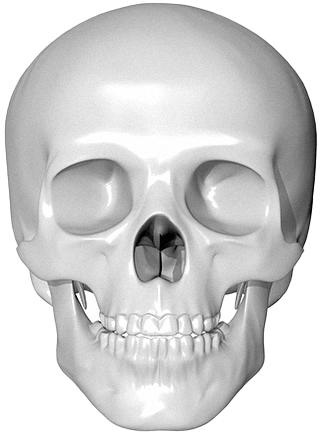
male
A sophisticated,
masculine facial contour
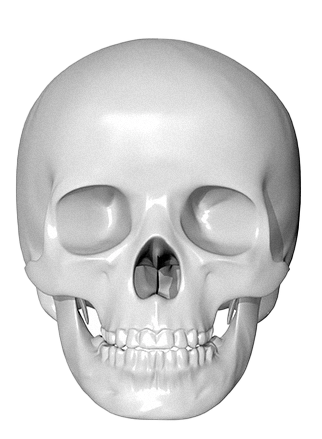
female
A small and slim three-
dimensional facial contour
Facial Contouring Surgery for Men
women’s procedures, which aim for a slim and smooth appearance.
Men’s surgery must correct prominent, protruding bones
while also accentuating distinctly masculine features.
The key in men’s facial contouring is to bring out
inherent masculine charm and revive a natural facial line.
Masculine
Charm
Natural
Contour
3D Contoured Face
345 Youtube
Watch the Video on
Facial Contouring Surgery for Men
Men’s facial contouring surgery is different from women’s methods. Find out what the differences are.
345 Youtube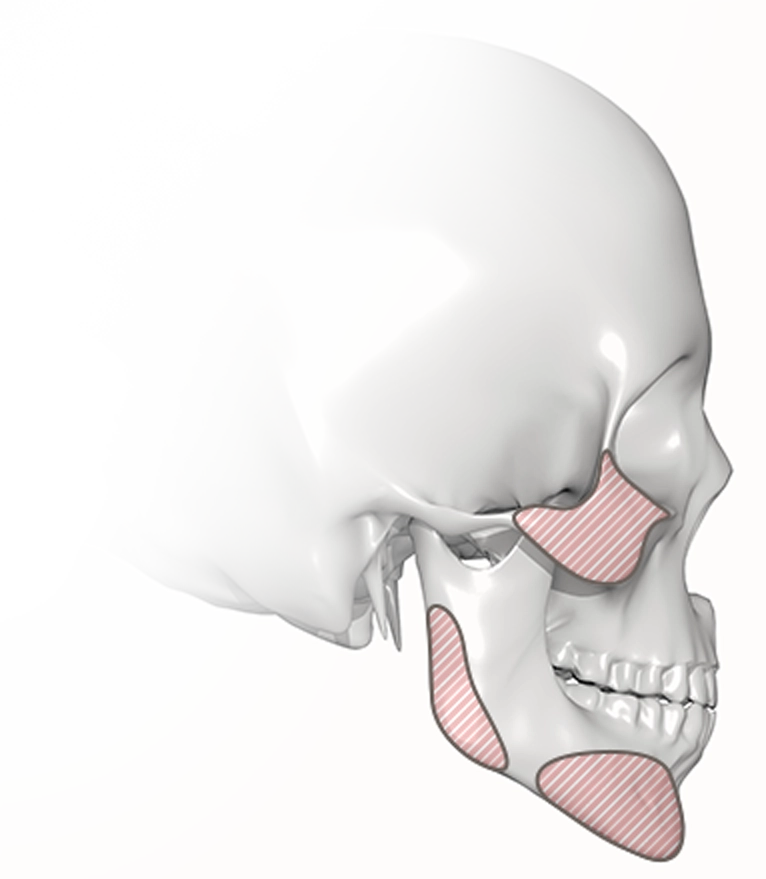
Surgical Areas for Contouring
Depending on the desired facial line, procedures are performed on the cheekbones, square jaw, chin, etc.
First, the Core of a Masculine Face
We do not simply pursue a “small and slim” look, but create a sophisticated masculine image.
Second, One-on-One Consultation with the Chief Surgeon
We refine the chin to ensure a slim jawline is visible from the front.
Third, No Need for Pin Removal
Since fixation pins are not used, there is no need for pin removal, leaving no traces.
Facial design for stylish man
Not a design that is merely small and slim,
but a sophisticated masculine design
or conversely, a flat face may lack dimensionality.
At 345 Plastic Surgery Clinic, we design the shape of
the cheekbones to suit each facial type and overall vibe.
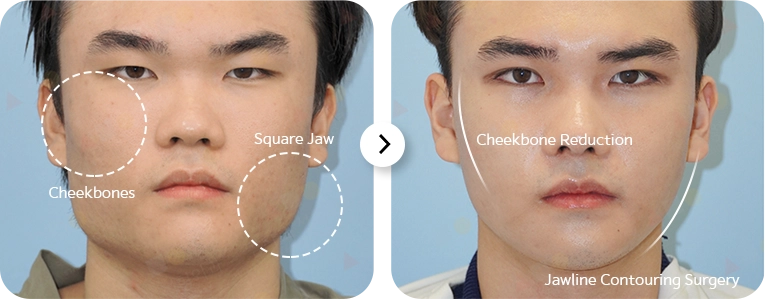
Before and After Photos of
Facial Contouring Surgery for Men
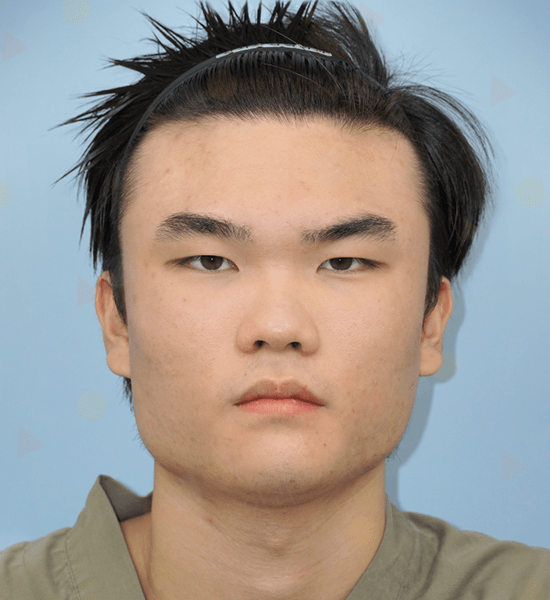
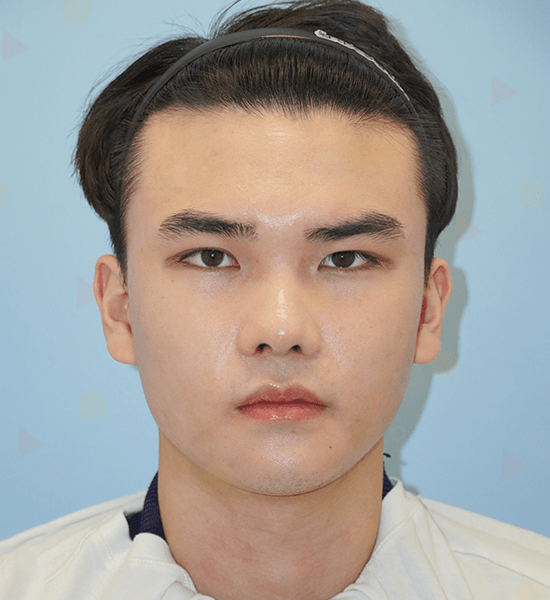
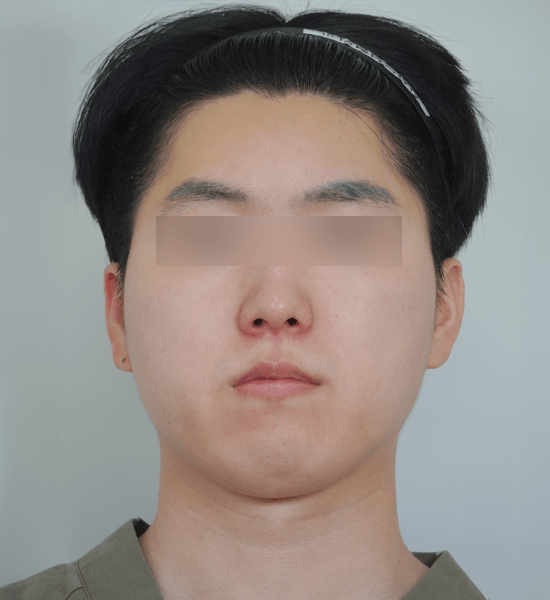
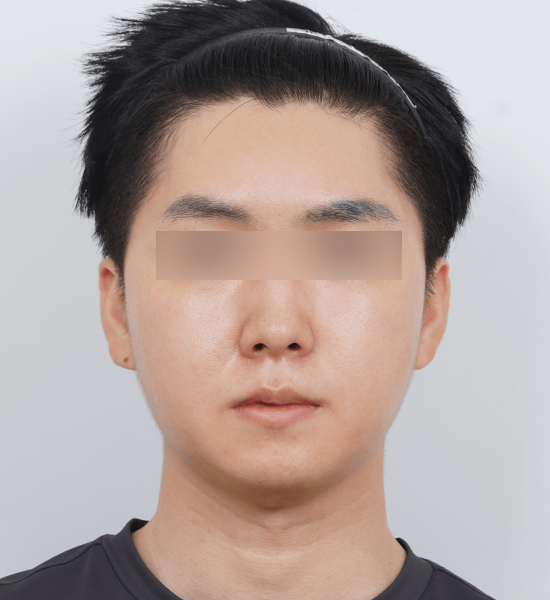




Area for Facial Contouring Surgery for Men
The types of procedures vary
depending on the facial area and desired results.
into three parts: the jaw, the chin, and the cheekbones.
We consider the overall harmony rather than evaluating
each area separately to create a sophisticated facial appearance.
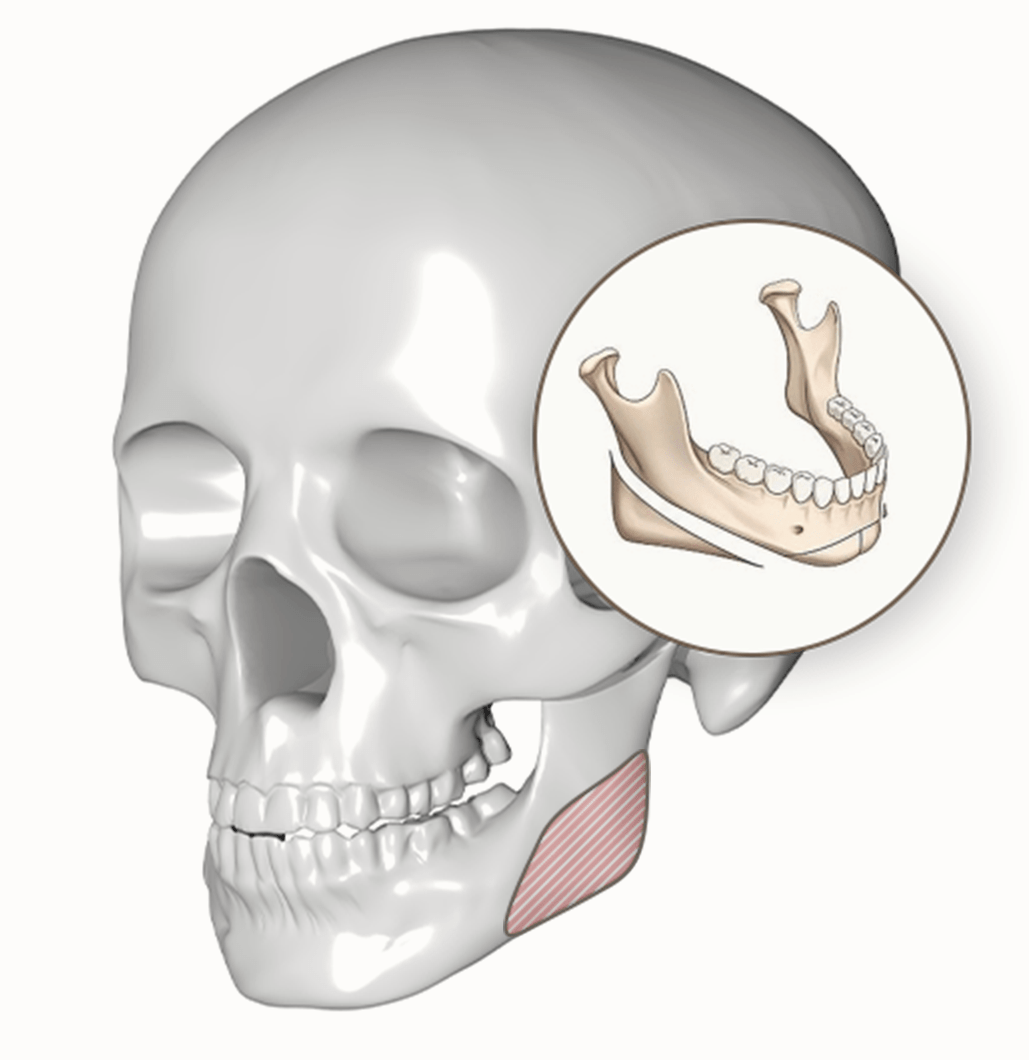
Square Jaw Surgery
This procedure considers the three-dimensional form of the jaw in square jaw surgery.

Cheekbone Surgery
Cheekbone reduction surgery is used to adjust the overall size and proportions of the face.
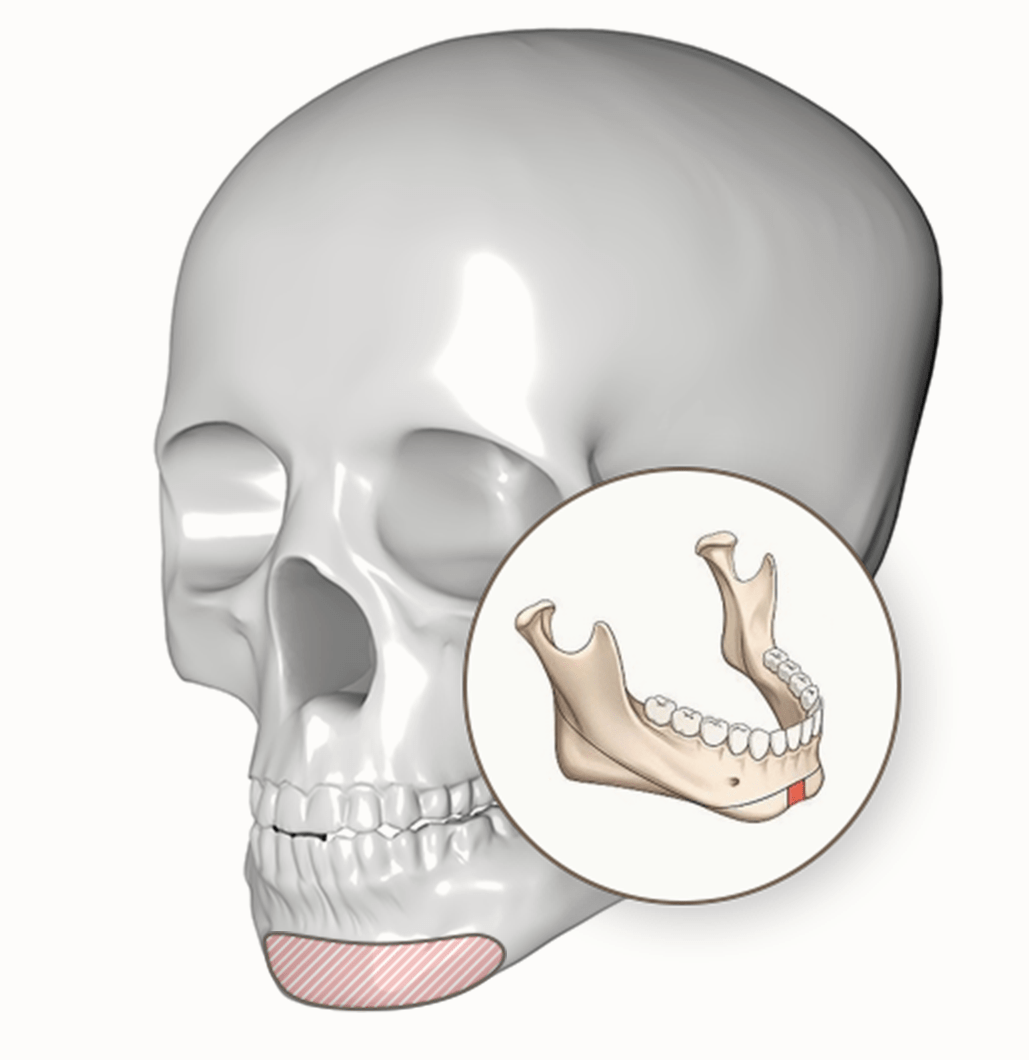
Chin Surgery
Using an osteotomy method tailored to the patient, we adjust the length and contour of the chin.
Facial Contouring Surgery for Men Aftercare program
Comprehensive Aftercare for
Facial Contouring Surgery for Men
We help patients recover smoothly and reduce scars, swelling, and bruising through advanced equipment.
Helps with wound healing after
surgery and reduces swelling
and bruising.
the skin cells to promote
soothing and regeneration.
skin cells, enhancing regenerative
ability and supporting faster
recovery after surgery.
to help you continue your recovery
process comfortably.
Facial Contouring Surgery for Men Info
Quick Overview of
Facial Contouring Surgery for Men
Find out about facial contouring surgery for men that naturally corrects asymmetry and enhances facial balance to the degree that suits your features.

Surgery Time
30 minutes to 3 hours

Anesthesia
General anesthesia
Hospital Stay
Same-day discharge to 1 night
Follow-Up Visit
1–2 visits (suture removal at 2 weeks)
Recovery
Daily activities possible after 2–3 days
Recommended target
Recommended for
these individuals
Are you concerned about surgery?
Feel free to inquire!
01
Firstly, Long Face
For those troubled by a long jaw or shovel-shaped chin that makes the face appear longer.
02
Secondly, Cheekbone Prominence
For those whose cheekbones protrude, making the face appear wider.
03
Thirdly, Square Jaw Concerns
For those troubled by a severe square jaw.
04
Fourthly, Facial Shape Improvement
For those whose facial features and overall harmony appear unnatural.
Frequently Asked Questions
About Facial Contouring
When can the screws be removed after facial contouring surgery?
There is no fixed rule for removing the screws. However, after a long period post-surgery, bone may cover the screws or plates, making removal more difficult. It is best to remove the screws (plates) after the bone has fully healed, before any bone buildup or secondary changes occur. While removal is possible starting from 6 months post surgery, our clinic typically recommend waiting around 1 year post surgery for screw removal.
Will cheek sagging always occur after cheekbone reduction surgery?
Generally, when undergoing bone surgery, the reduction in bone structure causes the surrounding tissue to shrink accordingly. The time (recovery period) and degree of this shrinkage can vary depending on the individual. If a significant amount of bone is removed due to highly developed cheekbones, or if there is already sagging skin, the outcome may differ. However, it cannot be said that cheek sagging will definitely occur just from cheekbone reduction surgery.
During consultations, it is possible to predict the extent of sagging, and it is advisable to plan the surgery based on the current condition. At our clinic, if sagging is expected, we often combine the surgery with a lifting procedure, referred to as “Cheek Lifting,” (Zygoma) to address this concern.
Can I undergo orthodontic treatment after facial contouring surgery?
Orthodontic treatment can generally begin about 1 month after facial contouring surgery without any issues. During the first month post-surgery, you are in the recovery phase, and actions like opening your mouth or chewing may be uncomfortable and different from before the surgery, so caution is necessary.
Additionally, surgeries such as cortical bone removal or masseter muscle reduction may be performed simultaneously, causing the surgical areas to become tightly healed. As a result, opening the mouth may not feel as natural. If you are considering orthodontics, it’s recommended to first go through the recovery process for about a month. Since recovery times vary among individuals, it’s important to consult with an orthodontist to determine if you can proceed with treatment based on your current condition.
Why is there a loss of sensation after cheekbone surgery?
There is one important nerve to be cautious of during cheekbone surgery—the infraorbital nerve, which is responsible for sensation in the front cheekbones, lips, and gums. Depending on the dissection area, the nerve may be slightly stretched, which can lead to a temporary decrease in sensation in the affected area.
However, as long as the nerve is not cut or severely damaged during the surgery, sensation will gradually return over time, so there is no need to worry.